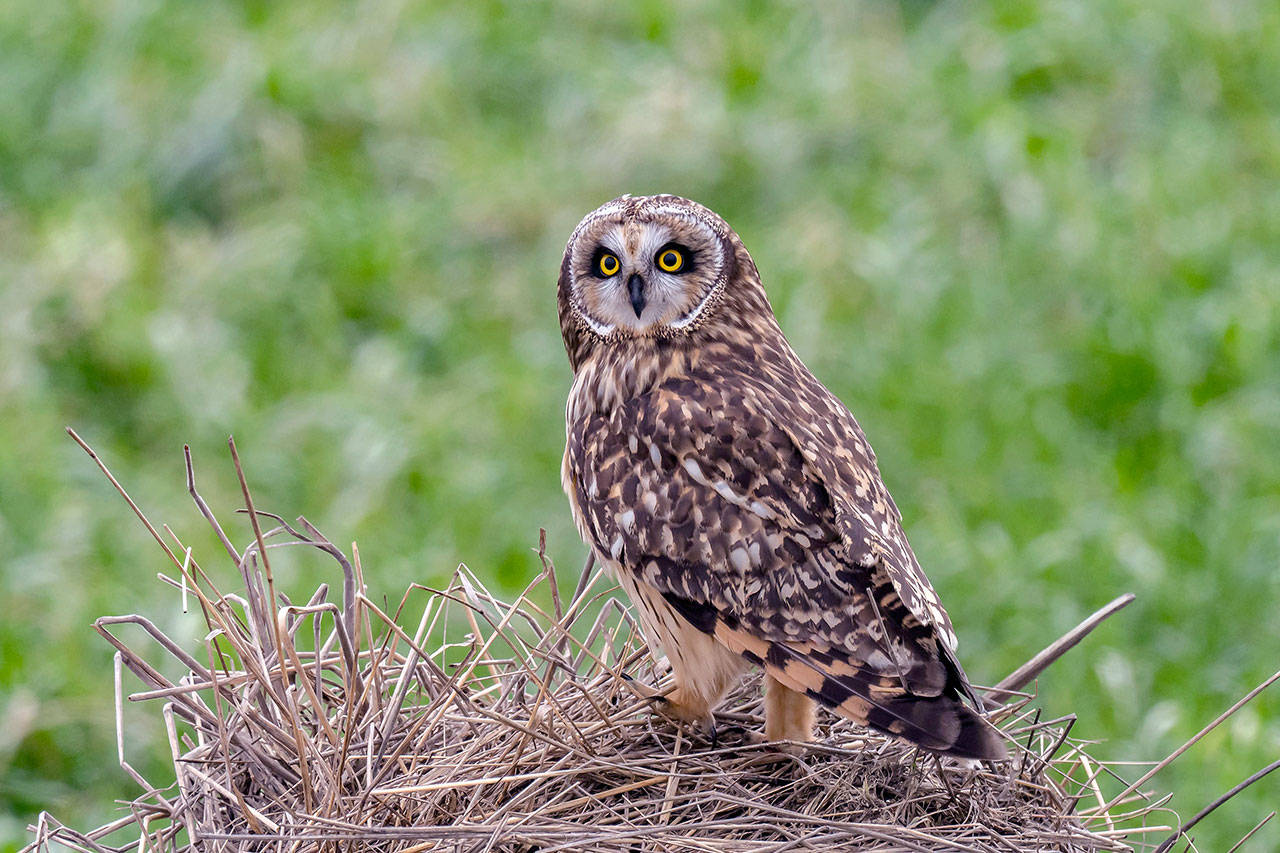Most of the photos I have seen of Short-eared Owls feature the bird in flight, so I was pleased to see this and decided on the spot to use it in today’s article. This is a very elegant bird with a great repertoire of movements in the air, great choreography in its attempts to catch prey. But I chose this quiet pose and let the birds eyes and plumage speak for themselves.
General Description: Short-eared Owls hunt during the day, giving all a chance to “see how it’s done” when it comes to catching prey. They are a medium-sized owl with short ears mostly hidden flat against their head and their plumage is mottled brown and buff-colored. They have a pale facial disk, large yellow eyes and a pale breast with finely streaked chest and belly. Their long wings have black patches at the wrist on both sides of their wings. They are 13.4 to 16.9 inches in length, with wingspans of 33.5 to 40.5 inches in length, and both sexes weigh from 7.3 to 16.8 ounces.
Habitat: These birds spend much of their time in open terrain, such as shrub-steppe, grasslands, agricultural fields, marshes, wetlands, meadows and shorelines. They can also be seen perched on fence posts or pieces of driftwood.
Behavior: Short-eared Owls are chase predators, active during the day and especially active hunting at dawn and dusk. Their courtship flights during breeding season are full of dramatic turns, vocalizing, and wing-clapping. They fly just above the tops of the grasses, very similar to Northern Harriers, often competing in the same field as harriers..
Diet: These owls are very fond of voles and other small mammals, but will also take rabbits, bats, muskrats and even small birds.
Nesting: Short-eared Owls form loose breeding colonies and while there may be some polygamous behavior, they are mostly monogamous. They nest in open areas on or near the ground, on hummocks or under shrubs. The female builds the nest, a small depression lined with dried grasses and feathers, and incubates six to eight eggs for 24 to 37 days. The male provides food for her through the incubation and then through the brooding too. The young may wander off the nest at 12 to 18 days of age, then fly at 27 to 36 days and hunt on their own one to two weeks after their first flight. Family groups roost together for a while during the day.
Migration: Most of these owls living in the colder areas are migratory and their migration is nomadic and irregular, with their movement seemingly dependent on prey availability. Most Short-eared Owls in western Washington, lowland valleys and along the coast are winter visitors.
Conservation Status: Cyclical variations in the vole population is probably the reason there are fluctuations in the population of Short-eared Owls. The major worry is loss of habitat through development and agriculture.
When and Where to Find on Grays Harbor: Short-eared Owls used to breed in western Washington, but there have been no recent records and the sightings are mostly during winter and migration along the coast. The best places to see them are either along the edges of sewage treatment ponds or out hunting above the dune grass at the beach.


